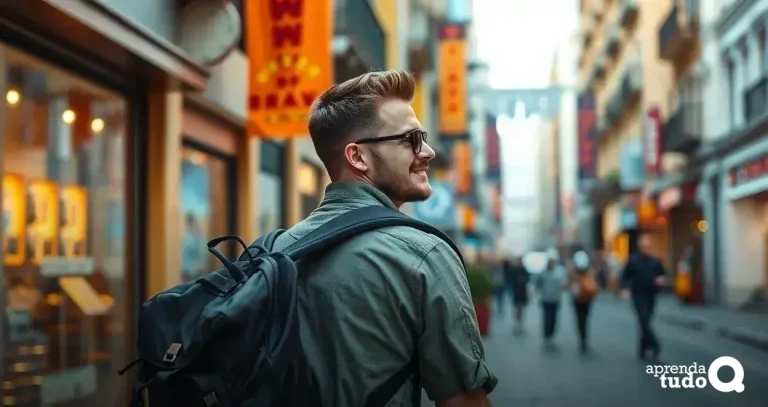Solo travel is an exciting adventure, but safety must always come first. Understanding the risks involved while exploring new places alone is vital, and following Solo Travel Safety Tips can make all the difference. Equip yourself with essential strategies to stay safe and enjoy every moment to the fullest.
Taking appropriate precautions and being informed can enhance your travel experience. From choosing your destinations wisely to packing the right essentials, the right knowledge is key.
Get ready for your next adventure—keep reading to discover valuable insights that could save your trip!
Understanding Solo Travel Risks
Solo travel can be thrilling, but it comes with certain risks that everyone should understand. Being alone in a new location can make you more vulnerable. Issues like theft, scams, or getting lost become more serious when you’re on your own.
It is important to be aware of your surroundings and understand the local customs. In some places, social norms may differ significantly from what you are used to. This can put you at risk if you don’t know how to navigate these cultural differences.
Before you go, research possible dangers specific to your destination. Knowing about areas to avoid or common scams helps you stay safe. Having a plan and being prepared can make all the difference when exploring solo.
Choosing Safe Destinations
When planning your solo trip, choosing safe destinations is crucial. Some places are known for being particularly welcoming to solo travelers. Look for locations with low crime rates and good reviews from other travelers. Popular tourist areas often have more safety measures in place.
Research common hazards in potential destinations. Understanding local laws and customs can help you avoid trouble. Websites and travel forums are great resources to learn about the experiences of others, ensuring you make informed choices.
Consider travelling during peak season, when more tourists are around. This can provide an extra layer of safety as crowds often lead to better attention from local authorities and increased security presence. Safe destinations help make your solo travel experience enjoyable and stress-free.
Essential Packing Tips for Solo Travelers
Packing smart is essential for solo travelers to ensure safety and convenience. Start with a sturdy backpack that fits comfortably. It should have a secure zipper to protect your belongings. Consider using packing cubes to keep your items organized and easy to access. This makes it easier to find what you need quickly, and following Solo Travel Safety Tips can help you avoid unnecessary stress.
Always pack a first-aid kit that includes basic supplies, such as band-aids, antiseptic wipes, and any personal medications. It’s also wise to have a portable charger for your phone, as staying connected is crucial for safety. Don’t forget to bring a reusable water bottle to stay hydrated and save money—another simple step aligned with Solo Travel Safety Tips.
Clothing should be versatile and appropriate for the climate. Choose items that can be mixed and matched to create different outfits. Bring a lightweight rain jacket and comfortable shoes for walking. Being prepared with the right gear helps you enjoy your adventure while staying safe and comfortable, reinforcing the importance of Solo Travel Safety Tips.
Staying Connected While Traveling Alone

Staying connected while traveling alone is vital for your safety and peace of mind. Make sure you have a reliable smartphone with access to data. This allows you to use maps, contact friends or family, and find help if needed. Consider using apps that provide offline access, so you’re covered even in areas with poor connectivity.
Keeping in touch with someone back home is important. Share your travel plan with a trusted friend or family member. Regular check-ins can help them know your whereabouts and well-being. You can also set up social media accounts to share updates, which can alert others to your location.
Utilizing local SIM cards or portable Wi-Fi devices can help you stay connected on the go. Wi-Fi is often available at cafés and public spaces, making it easier to connect. Just be cautious with public Wi-Fi and avoid sharing sensitive information while using it, as public networks can sometimes be insecure.
Emergency Contacts for Solo Travelers
Knowing who to contact in case of an emergency is essential for solo travelers. Start by saving important numbers in your phone. This includes local emergency services, your country’s embassy, and your accommodation. Having these contacts easily accessible can provide quick help if you find yourself in a difficult situation.
It’s also wise to share your itinerary and emergency contacts with a trusted friend or family member back home. They should know where you are staying and your travel plans. This way, they can help alert authorities if they don’t hear from you for a while.
In addition, consider carrying a physical list of contacts and important documents in your wallet. If your phone dies or gets lost, you’ll still have crucial information on hand. Being prepared with emergency contacts can give you peace of mind and make your solo travel experience safer.
Local Customs and Safety
Understanding local customs is key to staying safe while traveling alone. Different cultures have unique traditions and social norms. For example, in some countries, dressing modestly is important. Research the dress code before you arrive to avoid unwanted attention or disrespecting local customs.
Being aware of greetings and common interactions can also help you connect with locals and avoid misunderstandings. In some cultures, a firm handshake is preferred, while others may value a gentle nod or bow. Adapting to local etiquette shows respect and can make your travel experience more enjoyable.
Lastly, it’s essential to know the laws and safety practices of the area you are visiting. Familiarize yourself with local emergency numbers, street safety tips, and the general safety situation. Understanding these aspects helps you make informed decisions and enhances your overall security while exploring.
Using Technology for Safety
Using technology can significantly enhance safety while traveling alone. A smartphone is one of the most useful tools at your disposal. With GPS and mapping apps, you can easily navigate unfamiliar areas, helping you avoid getting lost. Always ensure your maps are downloaded for offline use in case you lose service.
There are also several safety apps designed for travelers. These apps can help you share your location with trusted contacts, alert someone if you feel unsafe, or quickly call emergency services. Some apps even provide information on safe routes and nearby facilities, ensuring you’re always a step ahead in planning.
Lastly, consider setting up alerts on your phone for local news and safety updates. Being informed about local weather, political situations, or any recent incidents can help you stay safe and prepared. Embracing technology in these ways can give you greater confidence and security while exploring on your own.
Trusting Your Instincts
Trusting your instincts is one of the most important safety tips for solo travelers. If something feels off or makes you uncomfortable, it’s essential to listen to that feeling. Whether you’re in a busy market or walking down a quiet street, if you sense danger or unease, don’t hesitate to change your plans or remove yourself from the situation.
Sometimes, your gut reaction can help protect you more than any guidebook can. For example, if a stranger approaches you in a way that feels too aggressive or unnerving, it’s perfectly okay to walk away. People often underestimate their ability to read situations, but your instincts can be a reliable guide.
Being aware of your surroundings is key to trusting your gut. Pay attention to body language and the general vibe of the area. Taking a moment to assess your environment can help you make better decisions and keep you safe. Remember, it’s better to be cautious than to put yourself at risk just to be polite or adventurous.
Don’t miss our article about Travel Credit Cards and learn how to choose the best options to save on fees, earn miles, and make your trips more rewarding and economical.






